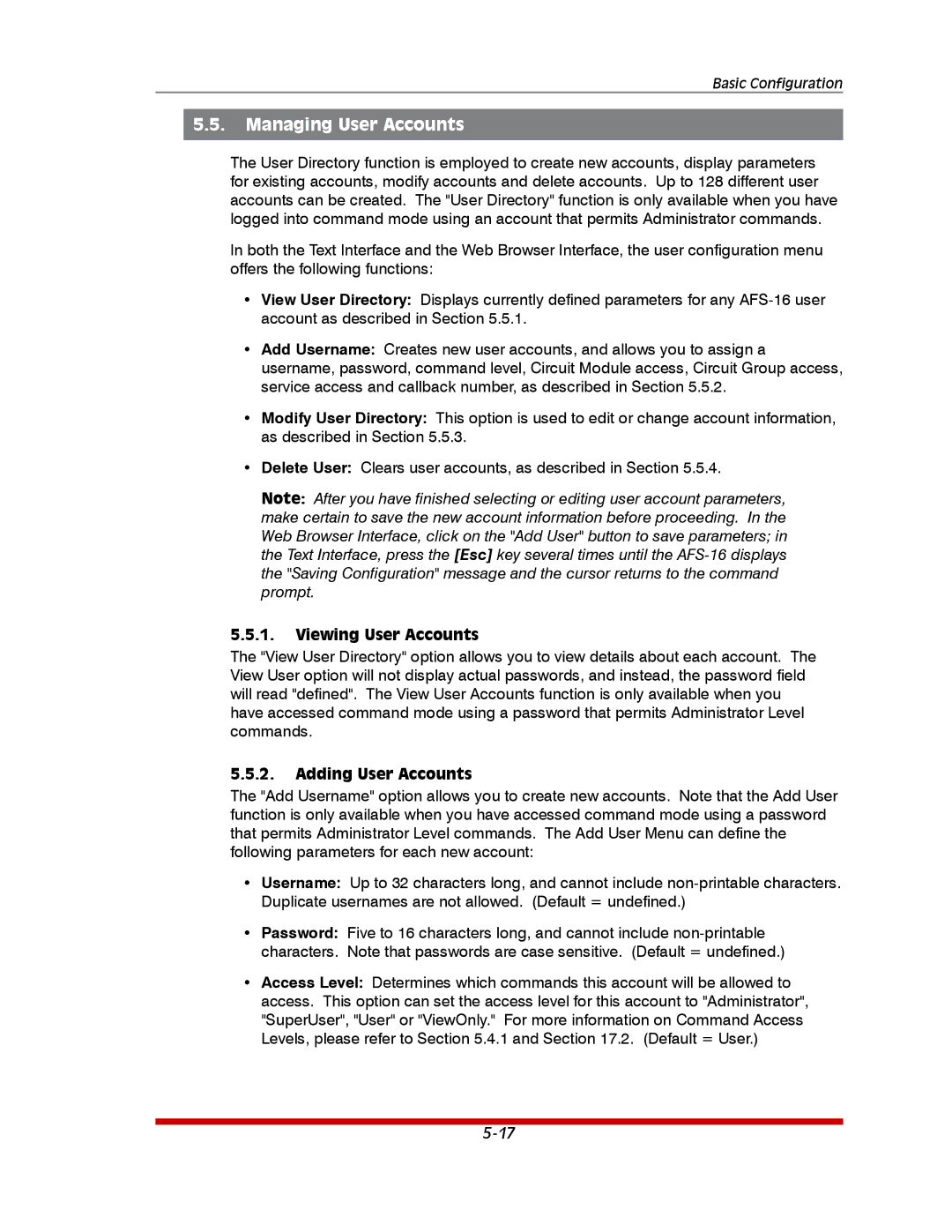
Basic Configuration
5.5.Managing User Accounts
The User Directory function is employed to create new accounts, display parameters for existing accounts, modify accounts and delete accounts. Up to 128 different user accounts can be created. The "User Directory" function is only available when you have logged into command mode using an account that permits Administrator commands.
In both the Text Interface and the Web Browser Interface, the user configuration menu offers the following functions:
•View User Directory: Displays currently defined parameters for any
•Add Username: Creates new user accounts, and allows you to assign a username, password, command level, Circuit Module access, Circuit Group access, service access and callback number, as described in Section 5.5.2.
•Modify User Directory: This option is used to edit or change account information, as described in Section 5.5.3.
•Delete User: Clears user accounts, as described in Section 5.5.4.
Note: After you have finished selecting or editing user account parameters, make certain to save the new account information before proceeding. In the Web Browser Interface, click on the "Add User" button to save parameters; in the Text Interface, press the [Esc] key several times until the
5.5.1.Viewing User Accounts
The "View User Directory" option allows you to view details about each account. The View User option will not display actual passwords, and instead, the password field will read "defined". The View User Accounts function is only available when you have accessed command mode using a password that permits Administrator Level commands.
5.5.2.Adding User Accounts
The "Add Username" option allows you to create new accounts. Note that the Add User function is only available when you have accessed command mode using a password that permits Administrator Level commands. The Add User Menu can define the following parameters for each new account:
•Username: Up to 32 characters long, and cannot include
•Password: Five to 16 characters long, and cannot include
•Access Level: Determines which commands this account will be allowed to access. This option can set the access level for this account to "Administrator", "SuperUser", "User" or "ViewOnly." For more information on Command Access Levels, please refer to Section 5.4.1 and Section 17.2. (Default = User.)
